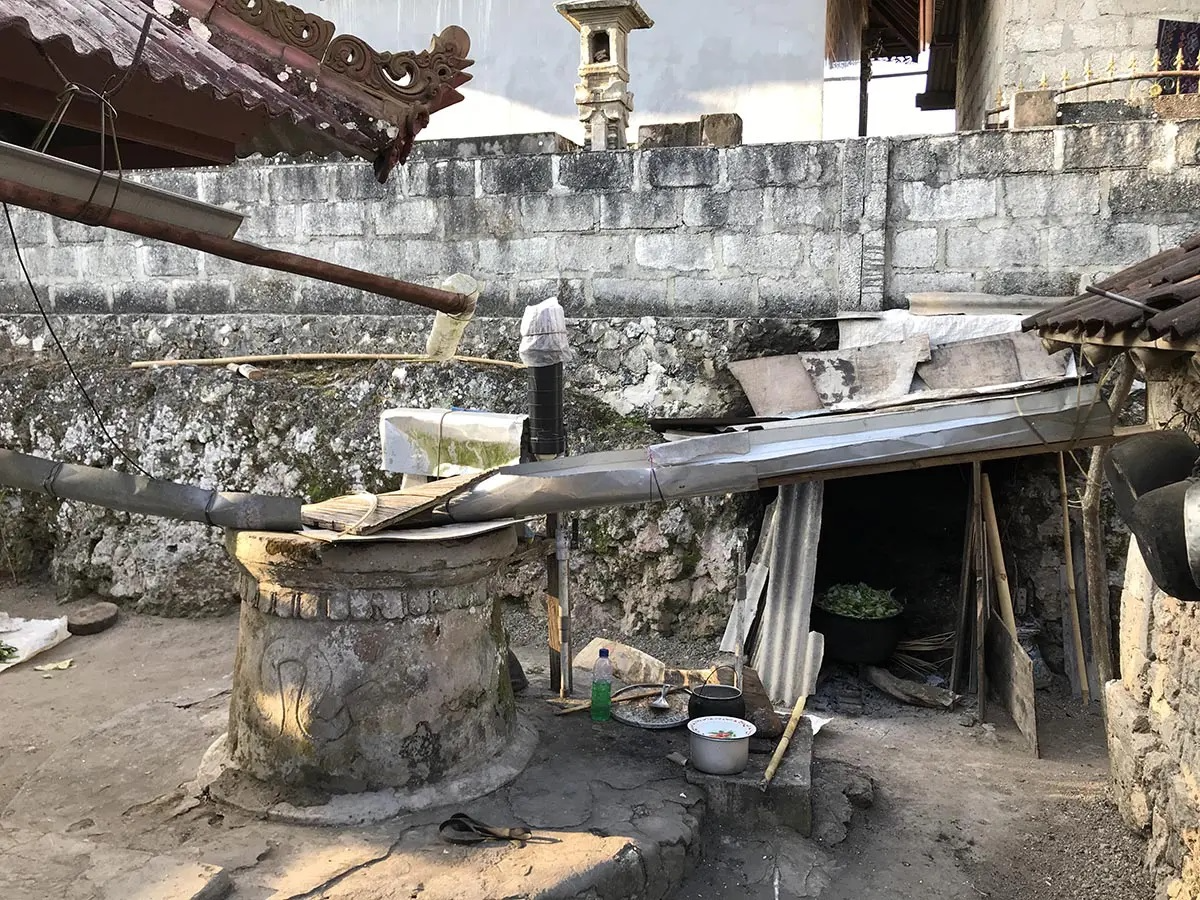Do No Harm, Nusa Penida

Nusa Penida off the east coast of Bali
When we are working with communities, we are often reminded of the first promise within the Hippocratic oath to do no harm. As this pandemic continues to impact peoples’ lives in so many ways, I was particularly mindful of this dictum during my recent visit to the small island of Nusa Penida off the east coast of Bali.

Nusa Penida and its fragile landscape
Nusa Penida, with its charming rock terraces, is a beautiful island. Prior to the pandemic, the island was rapidly developing as a tourist destination. But all of that has collapsed and people have returned to their fields as well as to the beaches. In the fields, corn, tapioca and peanuts are grown in the rainy season and sustain people through the long dry season. Along the beaches, seaweed farming is again the primary source of income that it was prior to the mass tourism.

Water catchment on Nusa Penida
Water is scarce except during the rainy season and most people collect water in their homes and fields. Bulb-shaped wells lined with cement are made in the limestone below the thin soil. At home, all run-off from roofs is collected. In fields, a cemented catchment area is made to drain into the well. Water is clearly very precious.

Every roof catches water
When the rains stop and the wells are dry, those who have the means are able to buy tanks of water brought up from one of the two springs on the island. A tank costs 150,000 rupiah (USD 10) and lasts a family of five about a month, if they are careful. During the tourist boom, there was not enough water on the island to fill swimming pools and provide tourists’ showers, so water was brought over from Bali.

Water is necessary for the natural dye process
Water is also essential in the natural dye process in Nusa Penida, especially for the red dye that is so characteristic of the island’s textiles. The Morinda citrifolia trees need ample rain and drainage. The roots, when harvested, need to be washed. And water is needed for the repeated red dye baths needed to get good colour, and for washing the yarn after dyeing.

Morinda grows well on this soil
So how do we responsibly respond to such a fragile ecology? How does Threads of Like work sustainably here? One of the success stories of Threads of Life and the Bebali Foundation was in facilitating the replanting of Morinda trees on the island.
In 2003, the Bebali Foundation held natural dye workshops for Balinese dyers. Pak Ngurah from Nusa Penida was one of the participants and he developed a strong natural dye business from what he was taught. In 2005, Pung bought 200 cuttings of the Balinese variety of Morinda citrifolia (locally named tiba) for Pak Ngurah to plant on his land. These cuttings have since grown into a forest that can now be harvested.
What is particularly exciting is that in 2006, Pak Ngurah found a tree of a Morinda variety indigenous to Nusa Penida (called sunti) on a hillside while he was cutting grass for his cow. He took cuttings and planted them among the tiba trees from Bali.

Ngurah planted enough trees for all his red dye needs
The sunti trees are now overtaking the tiba population and, according to Pak Ngurah, the root bark is thicker and the dye colour is much better. To get a good red colour, only three applications of red dye are needed with sunti compared to ten applications with tiba.
This is excellent news and reinforces what we so often find, that weavers in the past varietalized dye plants to best fulfill their needs, that local plants are much better adapted to their terrains, and are more efficient to use.

Dye processes require passing down knowledge of dye plants and recipes
Sustainability also involves having elders pass down important information related to dye plants and dye recipes. During this visit, we asked Ngurah’s great aunt to join us on a visit to Ngurah’s sunti trees. She remembers harvesting Morinda roots when she was young and told Ngurah only to harvest the small roots, that the small roots contain the best colour, and that the hole by the tree needs filling with dried leaves and compost after harvesting so that the roots grow back well for the next time he harvests from that tree. This knowledge transfer would not have happened without her visit to the land.

Handing down traditions
When we were back in the village, we saw a further step in the knowledge transfer, as Ngurah cleaned the newly harvested roots and explained to his son the quantities of bark needed compared to the weight of threads to be dyed red.

Traditional dye techniques requires deep understanding of ecology and culture
Sustainability and “doing no harm” come from understanding the fragility of an environment and the importance of traditional knowledge being passed on. These are among the main tenets of how Threads of Life works in the fields.

